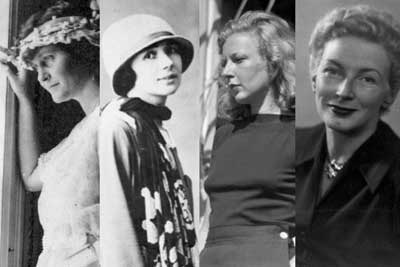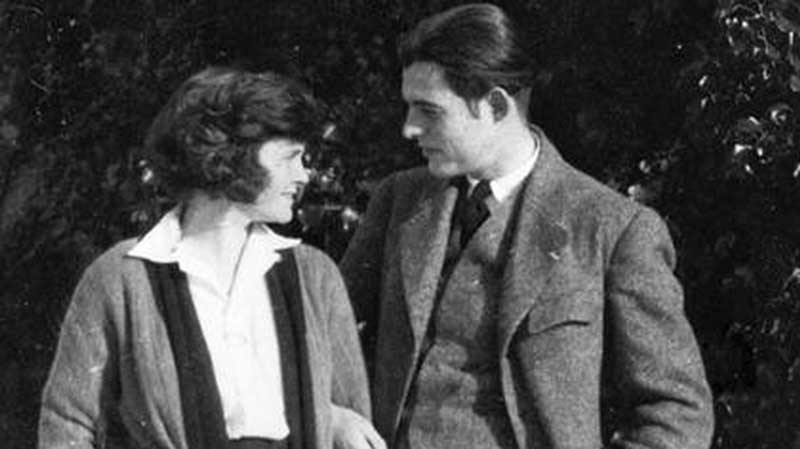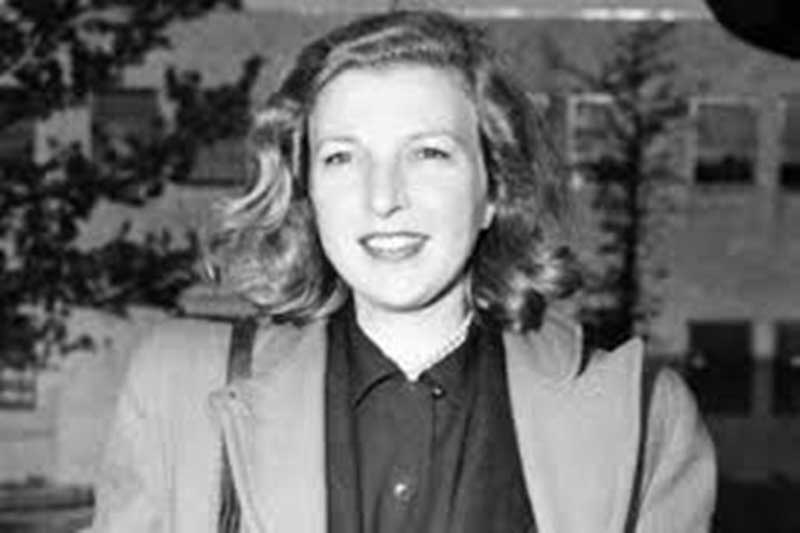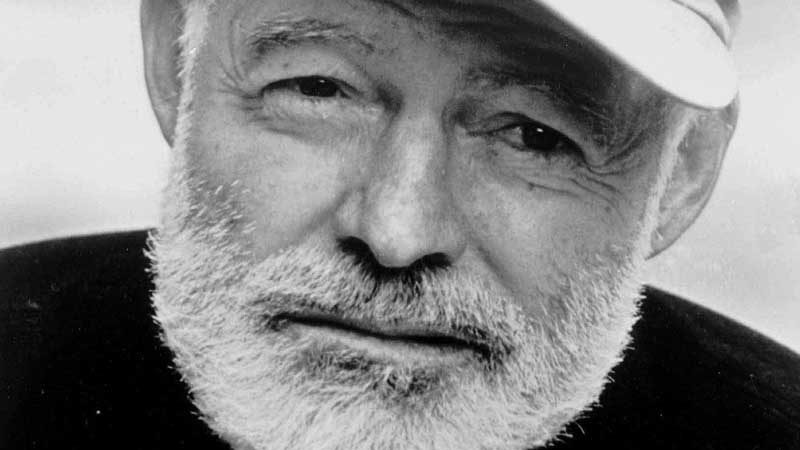
Born on November 9, 1891 in St Louis, Missouri, Elizabeth Hadley Richardson visited her old roommate Kate Smith, in Chicago, in December 1920 and through her met Hemingway, who was employed as an associate editor of the monthly journal, ‘Cooperative Commonwealth.’ Instantly, Hemingway became infatuated with her and knew that she is the girl he is going to marry. Red-haired Hadley, with a nurturing instinct, was eight years older than Hemingway. She and Hemingway corresponded during the winter of 1921. When she expressed misgivings about their age difference, Hemingway protested that it made no difference at all. He visited her in St. Louis in March of 1921, and two weeks later she visited him in Chicago. They did not see each other for two months, until he returned to St. Louis in May and in June she announced her engagement, despite objections to the marriage from his friends and her sister. Hadley was quite confident about what she was doing, she was confident about Hemingway's talent and strongly believed that she was the right woman for him.

On September 3, 1921, Hadley and Hemingway were officially married in Horton Bay, Michigan and spent their honeymoon at the Hemingway family summer cottage on Walloon Lake. As luck would have it, the weather was miserable and both Hadley and Hemingway came down with fever, sore throat, and cough. After their honeymoon they returned to Chicago, where they lived in a small apartment on North Dearborn Street. Initially they had the intention to visit Rome, but finally decided for Paris. That spring they also traveled to Italy and in the summer to Germany. In December 1922, Hadley went alone to Geneva to meet Hemingway, who was covering a Peace Conference. During this solo trip, while she was waiting for a train, Hadley misplaced and lost a suitcase filled with Hemingway's manuscripts. Devastated and angry at the loss of his work, he blamed her for the mishap.
After a few months, as Hadley became pregnant, the couple decided to move to Toronto for the child's birth. Before they left, the couple went for the first time to watch the bullfighting and the ‘Running of the Bulls Festival’ in Pamplona. Their son, ’Bumby’ was born on October 10, 1923, in Toronto, but Hemingway missed the occasion, as he had been to New York on assignment, and was returning on a train when his wife went into labour. When Bumby was only a few months old, they returned to Paris, and in January 1924 moved into a new apartment in Paris.

When the couple left Paris in June 1925, for their third consecutive visit to the Running of the Bulls Festival in Pamplona, they were accompanied by a group of American and British expatriates and pretty Pauline Pfeiffer was in the group. The trip and its consequent excitement inspired Hemingway's first novel, ‘The Sun Also Rises’, which he began to write immediately after the fiesta, finishing it in September. Though the book was dedicated to Hadley and junior Hemingway, their marriage was disintegrating as Hemingway was writing and revising the novel.
For the second year, the couple went to Schruns in Austria, for Christmas, when they were joined by Pauline Pfeiffer. Hemingway returned to Paris with Pfeiffer, leaving Hadley with Bumby in Austria. From Paris, he sailed to New York then came back to Paris in March. During that time, Hemingway may have begun his affair with Pauline. In the spring of 1926, Hadley became aware of the affair, although she endured Pauline's presence in Pamplona that July. But, on their return to Paris, Hadley and Hemingway decided to separate, and Hadley formally requested a divorce in the fall.
By November they had split their possessions, and Hadley accepted Hemingway's offer of the royalties from ‘The Sun Also Rises.’ The couple divorced in January 1927, and Hemingway married Pauline Pfeiffer in May the same year, while Hadley married Pulitzer Prize Winner Paul Mowrer on July 3, 1933, after a five-year courtship.

Pauline's family was wealthy and Catholic and before the marriage Hemingway was converted to Catholicism. By the end of the year Pauline, who was pregnant, wanted to move back to America and they left Paris in March 1928.
A little more than a year later, Pauline gave birth to their first son Patrick. It was a difficult delivery, Caesarian birth that became the fictional basis for Catherine’s death in ‘A Farewell to Arms’. Doctors recommended that she wait three years before having another child, so it was not until November 12, 1931 that their son Gregory Hancock was born, which was even more difficult Caesarian birth and the doctors insisted that they have no more children. However, because of her Catholic faith, Pauline refused to use birth control, forcing them to practice coitus interrupts. The couple’s sexual and marital problems began at this time.
There’s no doubt that Pauline loved her husband until the day she died and truly enjoyed being Mrs. Ernest Hemingway. She took a lot of satisfactions from the idea that she had helped him become one of America’s greatest writers. Even though she was a writer herself, Pauline chose not to pursue that career. Instead, she focused solely on Ernest’s writing. Hemingway once called her the best editor he ever had. Finally, Ernest and Pauline’s sexual and marital problems reached its limits—too many affairs and too little sex—and they divorced in 1940 after the publication of ‘For Whom the Bell Tolls’. Later, when Pauline lost her faith, she complained to a friend that, if she had not been a bloody fool practicing Catholic, she would not have lost her husband.

Sadly, Pauline Pfeiffer is known as one of modern literary history’s most controversial home-wreckers. Even, Hemingway himself vilified Pauline and wrote in his beloved Paris memoir, ‘ A Moveable Feast’, that in a planned way she had murdered his first marriage to the gentle, matronly Hadley Richardson by using the oldest trick of befriending Hadley to get access to him and then promptly casting her sexual charm to seduce him.
Hemingway met her third wife, Martha Ellis Gellhorn during a 1936 Christmas trip to Key West, Florida and they agreed to travel to Spain together to cover the Spanish Civil War, where Gellhorn was hired to report for ‘Collier’s Weekly’. Later, the pair celebrated Christmas of 1937 together in Barcelona. After that, she reported on the rise of Adolf Hitler. In the spring of 1938, months before the Munich Agreement, she was in Czechoslovakia.
In early 1939, Hemingway crossed to Cuba in his boat to live in Havana. Martha also followed him and they rented a 15 acre property, ‘La Finca Vigia’, 24 km from Havana. Though officially Hemingway lived with his second wife, Pauline until 1939, he and Martha Ellis Gellhorn lived together off and on for four years, before marrying in December 1940.

In the meantime, Martha Gellhorn became a famed journalist. After the outbreak of World War II, she described the events in the novel ‘ A Stricken Field’. She also reported the war from Finland, Hong Kong, Burma, Singapore, and England. She desperately wanted to witness the Normandy landings. But, as she did not have any official press credentials, she had to hide in a hospital ship bathroom, and upon landing impersonated a stretcher bearer. In fact, she was the only woman to land at Normandy on D-Day on June 6, 1944. She was also among the first journalists to report from Dachau Concentration Camp, after it was liberated on April 29, 1945.
However, Hemingway became increasingly resentful of Martha’s long absences during her reporting assignments. When she left Cuba in 1943 to cover the Italian Front, he asked her in a letter, whether she is a war correspondent or his wife in his bed.
From May 1944 to March 1945, Hemingway was in London and Europe. On his first arrival in London, he met ‘Time’ magazine correspondent Mary Welsh and became instantly infatuated. During that time, Martha had no other way but to cross the Atlantic in a ship filled with explosives, as Hemingway refused to help her to get a press pass on a plane. When she arrived in London, she found Hemingway hospitalized with a concussion from a car accident. However, unsympathetic to his unfortunate condition, Martha quite understandably accused him of being a bully and told him that she had enough of it.

In fact, Martha Gellhorn hated the idea of being gleamed in the reflected fame as Hemingway's third wife and she had no intention to be merely a footnote in his life. She could feel that, Hemingway was unable to sustain a long-lived and fully satisfied relationship with anyone. Married domestic life may seem to be the culmination of romantic love to him and sooner or later he becomes bored and restless, critical and bullying. However, even when she was married to Hemingway, Martha Gellhorn had an affair with U.S. Paratrooper Major General James M. Gavin. He was the commanding general of the 82nd Airborne Division and the youngest divisional commander in the U.S. Army in World War II. Regarding sex, she wrote in 1972 that she felt herself as an object of men’s delight and she only got the pleasure of being wanted. She knew that she was not built for lengthy cohabitation. Although she was prone to intense relationships with remarkable men, her heart had never been wholly in it. Even she confessed that she was the worst bed partner in five continents.
She hated her sexual relationship with Hemingway and confessed that she provided sex only when all excuses failed and she always hoped that it would be over quickly. It is said that, Martha Gellhorn, the woman who changed the face of war reporting, knew how important sex was for most men, and she used it not only to please men but to get good stories. She slept with generals and she had one-night stands with ordinary soldiers who might not survive the next day. She dressed elegantly, used makeup skillfully, flirted and coaxed men to do her bidding.
Hemingway outshone Martha Gellhorn as a novelist and Martha outshone him as a war reporter. This unusual rivalry between the two outlived their nine-year relationship, which finally ended in 1946. In March 1945, Hemingway saw Martha for the last time, as he was preparing to return to Cuba, and their divorce was finalized later that year. Meanwhile, he had asked Mary Welsh to marry him on their third meeting. Mary Welsh met Hemingway in the summer of 1944, in Paris, while covering the war and soon they became intimate. In 1945, she divorced Noel Monks, and in March 1946, married Hemingway in a ceremony in Cuba. In August 1946, she had a miscarriage due to an ectopic pregnancy, in which the embryo attaches outside the uterus.

In 1946, Hemingway affectionately called Mary his 'Kitten', but he was jealous of her success in reporting and on one occasion he even called her a ‘scavenger’. Once he threw wine in her face in front of friends. Another time he smashed her typewriter. Yet, despite their bruised life, Mary Welsh remained with Hemingway. While in Cuba, she acted as his secretary, typed some of his manuscripts, answered letters and supervised their household. At the same time, she was his fishing companion on his yacht, went with him to the bullfights in Spain, on safari in Kenya and to the celebrity places he frequented. They both had broken bones from ski spills in Italy and miraculously survived a plane crash in Africa in 1954.The pair lived in Cuba for many years and after 1959, shifted to Ketchum in Idaho.

The end came suddenly in the early morning hours of July 2, 1961, when Mary was awakened by a loud noise and was shocked to discover her husband’s body lying in a pool of blood. He had deliberately shot himself with his shotgun. According to biographer James Mellows, Hemingway had unlocked the basement storeroom where his guns were kept, gone upstairs to the front entrance foyer of their Ketchum home, and had shot himself. Initially, it was reported to the press that the death had been accidental. However, after five years of the incident, Mary Welsh in her interview with the press admitted that Hemingway had committed suicide
During her last few years, Mary Welsh became an invalid and seldom left her Manhattan apartment. After a prolonged illness, she died in St. Luke’s Hospital on November 26, 1986. She was 78. Before her death, she stipulated that she should be buried in Ketchum, next to Hemingway.
